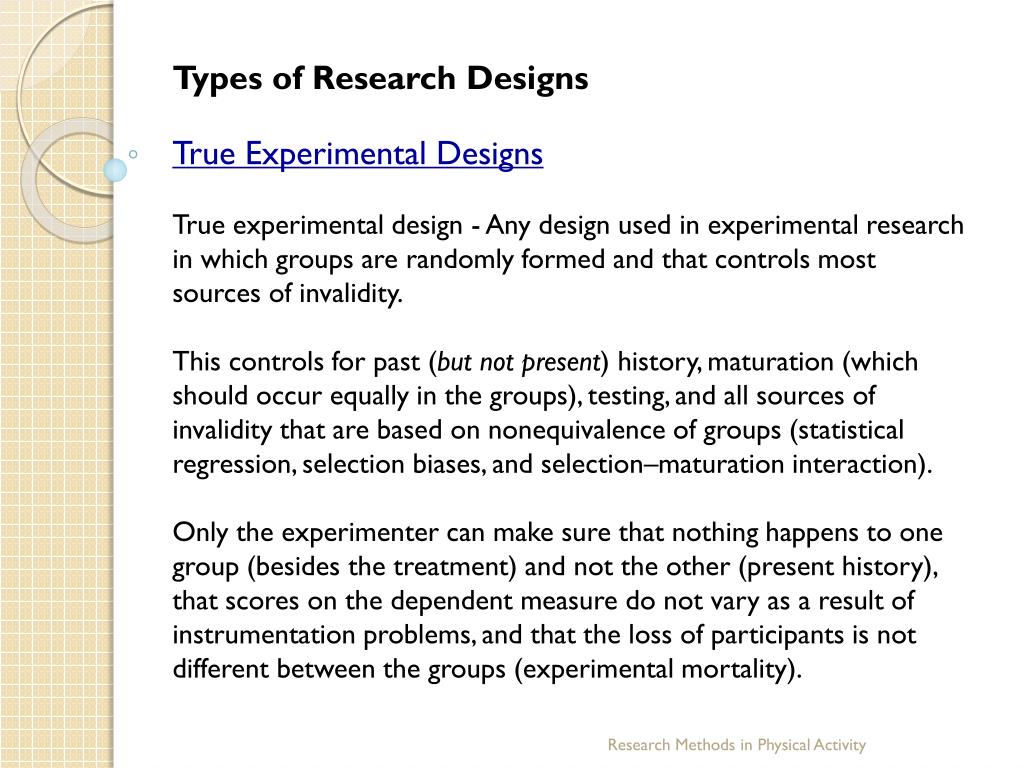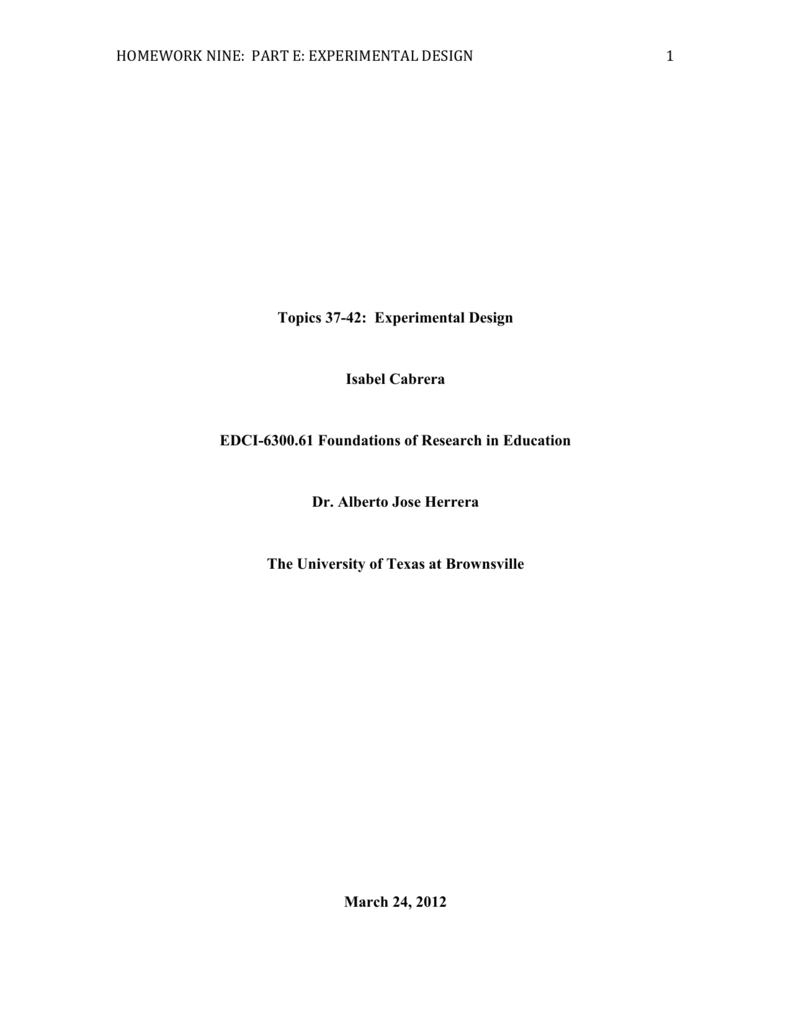Table Of Content

The choice of setting used in research depends on the nature of the experiment being carried out. Let us consider an academic institution that wants to evaluate the teaching method of 2 teachers to determine which is best. Imagine a case whereby the students assigned to each teacher is carefully selected probably due to personal request by parents or due to stubbornness and smartness.
True experimental research design
For practical reasons, many studies use non-probability sampling, but it’s important to be aware of the limitations and carefully consider potential biases. You should always make an effort to gather a sample that’s as representative as possible of the population. Even with a narrowly defined population, it’s rarely possible to collect data from every individual. In research, a population is the entire group that you want to draw conclusions about, while a sample is the smaller group of individuals you’ll actually collect data from.
Observation methods
Inferential statistics are used to make inferences or generalizations about a larger population based on the data collected in the study. Experimental design means creating a set of procedures to systematically test a hypothesis. A good experimental design requires a strong understanding of the system you are studying. A matched pairs design is an experimental design where pairs of participants are matched in terms of key variables, such as age or socioeconomic status. One member of each pair is then placed into the experimental group and the other member into the control group.
Step 1: Define variables and their relationship
For instance, when researchers wanted to figure out if the Head Start program, aimed at giving young kids a "head start" in school, was effective, they used a quasi-experimental design. They couldn't randomly assign kids to go or not go to preschool, but they could compare kids who did with kids who didn't. A research study could conduct pre-experimental research design when a group or many groups are under observation after implementing factors of cause and effect of the research. The pre-experimental design will help researchers understand whether further investigation is necessary for the groups under observation. To publish significant results, choosing a quality research design forms the foundation to build the research study. Moreover, effective research design helps establish quality decision-making procedures, structures the research to lead to easier data analysis, and addresses the main research question.
True Experimental Design
For example, if ten different studies show that a certain medicine helps lower blood pressure, a meta-analysis would pull all that information together to give a more accurate answer. Now, let's flip the script and talk about Cross-Sectional Design, the polar opposite of the Longitudinal Design. If Longitudinal is the grand storyteller, think of Cross-Sectional as the snapshot photographer. It captures a single moment in time, like a selfie that you take to remember a fun day. Researchers using this design collect all their data at one point, providing a kind of "snapshot" of whatever they're studying.
Appendix B: Mode experiment - Pew Research Center
Appendix B: Mode experiment.
Posted: Tue, 11 May 2021 07:00:00 GMT [source]
Formplus is the best tool for collecting experimental data using surveys. It has relevant features that will aid the data collection process and can also be used in other aspects of experimental research. Surveys can be shared with the respondents both physically and electronically. When collecting data through surveys, the kind of data collected depends on the respondent, and researchers have limited control over it.
Experimental studies of conflict: Challenges, solutions, and advice to junior scholars - Shorenstein Center
Experimental studies of conflict: Challenges, solutions, and advice to junior scholars.
Posted: Wed, 28 Jun 2023 07:00:00 GMT [source]
Repeated Measures Design is all about studying the same people or subjects multiple times to see how they change or react under different conditions. One well-known example you might have heard about is the Kinsey Reports from the 1940s and 1950s, which described sexual behavior in men and women. Researchers interviewed thousands of people but didn't manipulate any variables like you would in a true experiment.
Pre-Experimental Design Cons
Despite these challenges, longitudinal studies have been key in fields like psychology, sociology, and medicine. They provide the kind of deep, long-term insights that other designs just can't match. Factorial Design became the talk of the town with the rise of computers. Because this design produces a lot of data, and computers are the number crunchers that help make sense of it all. So, thanks to our silicon friends, researchers can study complicated questions like, "How do diet AND exercise together affect weight loss?" instead of looking at just one of those factors.

Experimental Research Designs: Types, Examples & Methods
Data collection methods in experimental research are the different ways in which data can be collected for experimental research. They are used in different cases, depending on the type of research being carried out. Many experiments are carried out in the laboratory, where control can be exerted on the extraneous variables, thereby eliminating them. The experimental research method is widely used in physical and social sciences, psychology, and education. It is based on the comparison between two or more groups with a straightforward logic, which may, however, be difficult to execute. Experimental research is the most familiar type of research design for individuals in the physical sciences and a host of other fields.
For example, imagine we want to study if walking daily improved blood pressure. A single-blind experiment is when the subjects are unaware of which treatment they are receiving, but the investigator measuring the responses knows what treatments are going to which subject. In other words, the researcher knows which individual gets the placebo and which ones receive the experimental treatment.
The posttest-only control group design is almost the same as classic experimental design, except it does not use a pretest. Researchers who use posttest-only designs want to eliminate testing effects, in which participants’ scores on a measure change because they have already been exposed to it. If you took multiple SAT or ACT practice exams before you took the real one you sent to colleges, you’ve taken advantage of testing effects to get a better score. That knowledge could cause them to answer differently on the post-test than they otherwise would. In theory, as long as the control and experimental groups have been determined randomly and are therefore comparable, no pretest is needed.

No comments:
Post a Comment